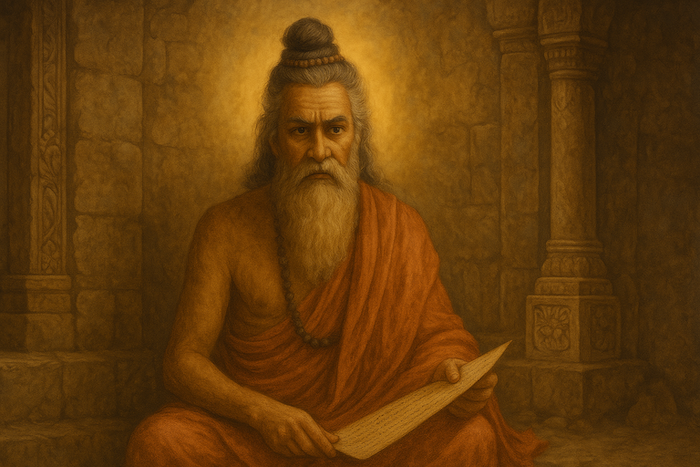
Ancient Wisdom Series
Vishwamitra
Gayatri Mantra
- Originally a powerful king (Kshatriya) named Kaushika
- Renounced his throne and underwent intense tapas (penance) to become a Brahmarishi — a status achieved only when Vashishtha acknowledged him
- Credited with the Gayatri Mantra, one of the most sacred Vedic mantras
- Author of a large portion of the Rigveda (Mandala 3)
- A symbol of willpower, transformation, and spiritual evolution
Family Lineage / Gotra
birthName
Kaushika
father
King Gadhi
Of the Kusha dynasty
daughter
Shakuntala
Her story is central to the epic Mahabharata
grandson
Bharata
After whom India (Bharat) is named
This makes Vishwamitra a key figure in the ancestral line of Indian civilization!
Key Texts
Rigveda – Mandala 3
Includes hymns authored by Vishwamitra, including the Gayatri Mantra (Rigveda 3.62.10)
Itihasa and Puranas
Revered in these texts for his spiritual and royal exploits
Interesting Stories
Rivalry with Vashishtha & the Kamadhenu Incident
As a king, Vishwamitra tried to seize the divine cow Kamadhenu from Sage Vashishtha
Kamadhenu defeated Vishwamitra's army using divine beings
Humbled and inspired, he gave up his kingdom and began intense penance to become a sage
Struggles with Anger and Desire
Faced many tests — once distracted by Menaka, an Apsara sent by Indra
Their union led to the birth of Shakuntala, whose son Bharata became an emperor
Despite distractions, he resumed penance each time, showing relentless determination
Acceptance by Vashishtha
After countless years of struggle, penance, and ego-confrontation, Vashishtha finally declared Vishwamitra a Brahmarishi
This moment is considered one of the greatest spiritual victories in Indian mythology
Role in the Ramayana
Vishwamitra trains Rama and Lakshmana in divine weapons (astras)
Takes them to defeat demons like Tataka and Subahu
Brings them to Mithila, where Rama meets Sita — making Vishwamitra the one who sets the divine love story in motion
Contributions and Discoveries
Introduced the Gayatri Mantra, used for spiritual awakening and intellect
Helped bridge the Kshatriya-Brahmana divide — showing that even a warrior can attain highest spiritual status
Showcased the power of determination, forgiveness, and transformation
Spiritual Symbolism
Represents the inner battle between ego and humility, and the journey from power to peace
His story is widely seen as the ideal of human perseverance toward enlightenment
Why is he third on the list?
Vishwamitra is not born a sage — he chooses to become one, which makes him relatable and inspiring
His role in composing Gayatri Mantra, shaping Rama's early path, and being a link in India's mythological ancestry (Bharata) makes him a cultural and spiritual giant
His position after Parashara and Vashishtha fits both chronologically and thematically — from inherited wisdom to earned wisdom
Lineage & Timeline
Satya Yuga
~2.16 million years
The first and most virtuous age where dharma stood on all four legs. Many Rishis including Vashishtha and Vishwamitra lived during this time.